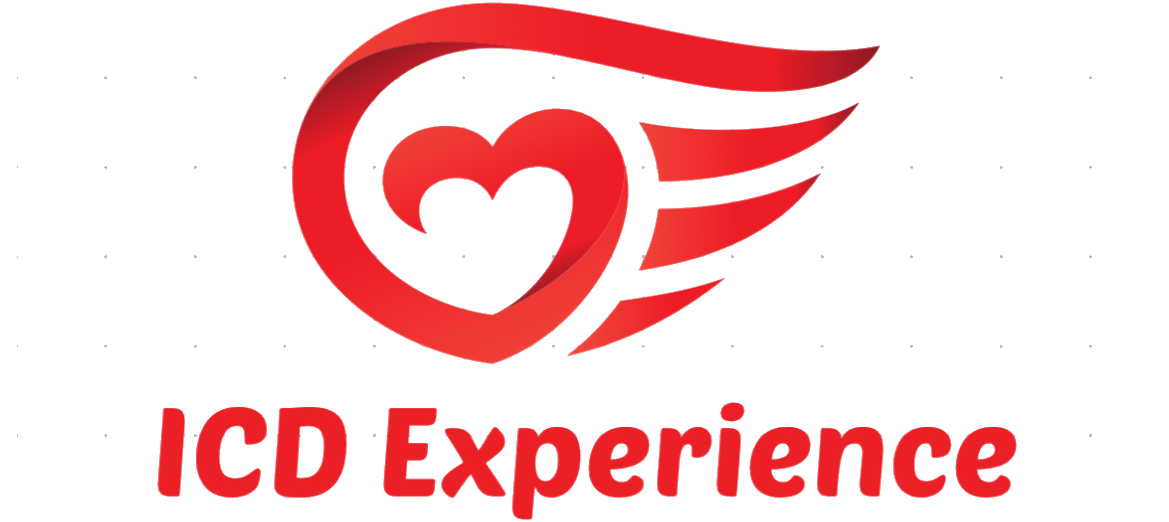When it comes to managing heart conditions, the Implantable Cardioverter Defibrillator (ICD) and pacemaker are crucial devices that save lives and enhance quality of life. Although these devices share some similarities, they serve different purposes and address distinct cardiac issues. Understanding the differences between an ICD and a pacemaker is essential for patients, caregivers, and healthcare providers. In this article, we will explore the functions, uses, and key distinctions between these two critical cardiac devices.
What is an Implantable Cardioverter Defibrillator (ICD)?
An Implantable Cardioverter Defibrillator (ICD) is a small, battery-powered device implanted under the skin, usually near the collarbone. Its main job is to monitor heart rhythms and deliver electrical shocks when necessary to correct life-threatening arrhythmias, such as ventricular tachycardia and ventricular fibrillation. These arrhythmias can lead to sudden cardiac arrest if not treated immediately.
How Does an ICD Work?
An ICD constantly monitors the heart’s electrical activity through leads connected to the heart. When it detects an abnormal rhythm, it can deliver several types of therapy based on the severity of the arrhythmia:
- Anti-Tachycardia Pacing (ATP): For less severe arrhythmias like ventricular tachycardia, the ICD delivers a series of rapid electrical pulses to the heart to restore a normal rhythm. This therapy is generally painless.
- Cardioversion: If ATP fails, the ICD delivers a low-energy shock synchronized with the heartbeat to correct the arrhythmia.
- Defibrillation: For life-threatening arrhythmias such as ventricular fibrillation, the ICD delivers a high-energy shock to reset the heart’s electrical system and restore a normal rhythm. This shock, although necessary for survival, can cause discomfort.
ICDs are particularly important for individuals with a history of sudden cardiac arrest, those at high risk of developing life-threatening arrhythmias, and people with certain inherited heart conditions.
Who Needs an ICD?
Doctors typically recommend ICDs for individuals at high risk of sudden cardiac death due to ventricular arrhythmias. These include:
- Patients with a history of cardiac arrest: Those who have survived sudden cardiac arrest often need an ICD.
- Patients with a history of ventricular tachycardia or ventricular fibrillation: When these arrhythmias occur without a clear reversible cause, an ICD becomes necessary.
- Patients with inherited heart conditions: Conditions like hypertrophic cardiomyopathy or long QT syndrome increase the risk of sudden cardiac arrest, making an ICD a protective measure.
- Patients with heart failure: Some patients with severe heart failure face a high risk of dangerous arrhythmias, so an ICD can provide life-saving intervention.
What is a Pacemaker?
A pacemaker is a small, battery-powered device implanted under the skin, typically near the collarbone, similar to an ICD. However, a pacemaker primarily helps regulate the heart’s rhythm, especially in cases where the heart beats too slowly (bradycardia) or irregularly.
How Does a Pacemaker Work?
A pacemaker monitors the heart’s electrical activity and sends electrical impulses to stimulate the heart if it detects that the heart is beating too slowly or irregularly. The device connects to the heart through leads, which transmit the necessary electrical impulses to maintain a steady heart rate.
Pacemakers can operate in different modes depending on the patient’s needs:
- Single-Chamber Pacemaker: This type of pacemaker has one lead placed in either the right atrium or the right ventricle. It sends electrical impulses to that chamber to maintain a regular rhythm.
- Dual-Chamber Pacemaker: A dual-chamber pacemaker has two leads, one in the right atrium and one in the right ventricle. It coordinates the timing of contractions between these two chambers to ensure the heart beats efficiently.
- Biventricular Pacemaker (CRT-P): Also known as Cardiac Resynchronization Therapy (CRT), this pacemaker has leads placed in both ventricles and sometimes the atrium. It helps treat heart failure by synchronizing the contractions of the left and right ventricles, improving the heart’s efficiency.
Doctors primarily use pacemakers for patients with bradycardia, atrial fibrillation with a slow ventricular response, heart block, or other conditions that cause the heart to beat too slowly or irregularly.
Who Needs a Pacemaker?
Doctors recommend pacemakers for patients with various conditions that result in slow or irregular heartbeats, including:
- Bradycardia: A condition where the heart beats too slowly, often leading to fatigue, dizziness, or fainting.
- Heart Block: A condition where the electrical signals between the atria and ventricles are delayed or blocked, causing the heart to beat irregularly.
- Atrial Fibrillation with Slow Ventricular Response: In some cases of atrial fibrillation, the heart’s ventricles may not receive enough electrical signals, leading to a slow heart rate.
- Heart Failure: In certain cases of heart failure, a biventricular pacemaker can help improve the heart’s pumping efficiency.
Key Differences Between an ICD and a Pacemaker
While both ICDs and pacemakers are implanted under the skin and connect to the heart via leads, they have distinct functions, indications, and target patients.
Functionality
- ICD: The ICD’s primary role is to monitor the heart’s rhythm and deliver shocks when necessary to correct life-threatening arrhythmias. It aims to prevent sudden cardiac death by intervening during ventricular tachycardia or ventricular fibrillation.
- Pacemaker: A pacemaker mainly regulates the heart’s rhythm by sending electrical impulses when the heart beats too slowly or irregularly. It does not deliver high-energy shocks or treat life-threatening arrhythmias.
Indications for Use
- ICD: Doctors use ICDs for patients at risk of sudden cardiac death due to ventricular arrhythmias. ICDs serve both secondary prevention (for those who have already experienced a life-threatening arrhythmia) and primary prevention (for high-risk patients who have not yet experienced such an event).
- Pacemaker: Pacemakers are indicated for patients with conditions that cause the heart to beat too slowly or irregularly, such as bradycardia or heart block. They maintain a regular heart rate and prevent symptoms like dizziness, fatigue, and fainting.
Therapy Delivered
- ICD: ICDs deliver three types of therapy: anti-tachycardia pacing (ATP), cardioversion, and defibrillation. These therapies correct dangerous arrhythmias and prevent sudden cardiac death.
- Pacemaker: Pacemakers deliver low-energy electrical impulses to stimulate the heart and maintain a regular rhythm. They do not deliver shocks for arrhythmias.
Device Complexity
- ICD: ICDs are more complex devices than pacemakers. They need to detect and respond to a wide range of arrhythmias, requiring sophisticated programming and more extensive follow-up to ensure proper function.
- Pacemaker: Pacemakers are less complex because their primary function is to maintain a regular heart rate. While they can have advanced features like rate responsiveness, their overall functionality is simpler.
Similarities Between an ICD and a Pacemaker
Despite their differences, ICDs and pacemakers share some common features.
Implantation Procedure
Doctors implant both ICDs and pacemakers in a similar way. They perform the procedure under local anesthesia with sedation, keeping the patient comfortable and awake. The surgeon makes a small incision near the collarbone, placing the device under the skin. Leads are then threaded through a vein into the heart, where they are secured.
The implantation procedure usually takes one to two hours. Most patients can go home the same day or the next day. Recovery time is generally short, with patients advised to avoid heavy lifting and strenuous activity for a few weeks to allow the incision to heal.
Monitoring and Follow-Up
Both ICDs and pacemakers require regular follow-up appointments to monitor device function, check battery life, and make any necessary adjustments. Typically, these follow-ups occur every three to six months, depending on the patient’s condition and the type of device.
Many modern ICDs and pacemakers include remote monitoring capabilities. This allows healthcare providers to receive real-time data from the device without the need for frequent in-person visits. This technology helps detect potential issues early, ensuring the device functions properly.
Battery Life and Replacement
The battery life of both ICDs and pacemakers typically ranges from five to seven years, depending on how often the device is used which is more in depth described our previous battery management article. When the battery nears the end of its life, doctors replace the entire device (except the leads) in a procedure similar to the original implantation.
Complications and Risks
Like any medical procedure, ICD and pacemaker implantation carries certain risks. Understanding these risks can help patients and healthcare providers make informed decisions.
Risks Associated with ICDs
The most common risks associated with ICD implantation include:
- Infection: As with any surgical procedure, there is a risk of infection at the implantation site.
- Lead Dislodgement: The leads connecting the ICD to the heart can sometimes move out of place, requiring repositioning.
- Inappropriate Shocks: Although ICDs are designed to deliver shocks only when necessary, there is a small risk that the device could deliver an inappropriate shock.
- Battery Depletion: While ICD batteries are designed to last several years, they eventually need replacement. Doctors closely monitor patients to ensure timely battery replacement.
Risks Associated with Pacemakers
The risks associated with pacemaker implantation are similar to those for ICDs and include:
- Infection: There is a risk of infection at the site where doctors implant the pacemaker.
- Lead Dislodgement: The leads connecting the pacemaker to the heart can sometimes move out of place, requiring repositioning.
- Pacemaker Malfunction: In rare cases, a pacemaker may fail to deliver the appropriate electrical impulses, requiring device reprogramming or replacement.
- Battery Depletion: Like ICDs, pacemaker batteries need periodic replacement, usually every five to seven years.
Advances in ICD and Pacemaker Technology
The field of cardiac device technology constantly evolves, with new advancements aimed at improving patient outcomes and quality of life.
MRI-Compatible Devices
One significant advancement in recent years is the development of MRI-compatible ICDs and pacemakers. Traditionally, patients with these devices were advised against undergoing MRI scans due to the risk of interference with the device’s function. However, newer models are designed to be safe for use in MRI environments, allowing patients to undergo these important diagnostic tests without fear.
For more information on MRI-compatible devices, visit the FDA’s MRI Safety Guidelines.
Leadless Pacemakers
Another innovation is the development of leadless pacemakers. Unlike traditional pacemakers, which require leads to connect the device to the heart, leadless pacemakers are placed directly in the heart via a minimally invasive procedure. This technology reduces the risk of lead-related complications and can be a good option for certain patients.
Learn more about leadless pacemakers at Johns Hopkins Medicine.
Subcutaneous ICDs
Subcutaneous ICDs (S-ICDs) are a type of ICD implanted just under the skin rather than in the chest cavity. The advantage of an S-ICD is that it does not require leads to be placed inside the heart, reducing the risk of lead-related complications. This device is particularly beneficial for younger patients or those at higher risk of infection.
You can find additional details on subcutaneous ICDs at Boston Scientific.
Decision-Making: Choosing Between an ICD and a Pacemaker
Choosing between an ICD and a pacemaker depends on the specific needs of the patient and the underlying heart condition. Here are some considerations:
- Risk of Sudden Cardiac Death: If a patient faces a high risk of sudden cardiac death due to ventricular arrhythmias, an ICD is usually the preferred choice. ICDs are designed to prevent sudden cardiac death by delivering life-saving shocks when necessary.
- Heart Rate Issues: If a patient has a condition that causes the heart to beat too slowly or irregularly, a pacemaker may be the better option. Pacemakers effectively maintain a steady heart rate and prevent symptoms like dizziness and fainting.
- Combination Devices: In some cases, a patient may need a device that combines the functions of both an ICD and a pacemaker. These combination devices can provide both life-saving shocks and pacing support, depending on the patient’s needs.
The decision-making process should involve a thorough discussion between the patient and their healthcare provider, considering the patient’s medical history, risk factors, and lifestyle.
Conclusion
Both Implantable Cardioverter Defibrillators (ICDs) and pacemakers are essential tools in managing heart conditions, but they serve different purposes and treat distinct types of cardiac issues. ICDs are designed to prevent sudden cardiac death by correcting life-threatening arrhythmias, while pacemakers help regulate the heart’s rhythm in cases of bradycardia or other conditions that cause the heart to beat too slowly or irregularly.
Understanding the differences between these devices helps patients and their caregivers make informed decisions about their cardiac care. With ongoing advancements in technology, both ICDs and pacemakers continue to evolve, offering new features and benefits that improve patient outcomes and quality of life.
For more in-depth insights, check out my book “Understanding ICD Implants: A Comprehensive Guide.”












